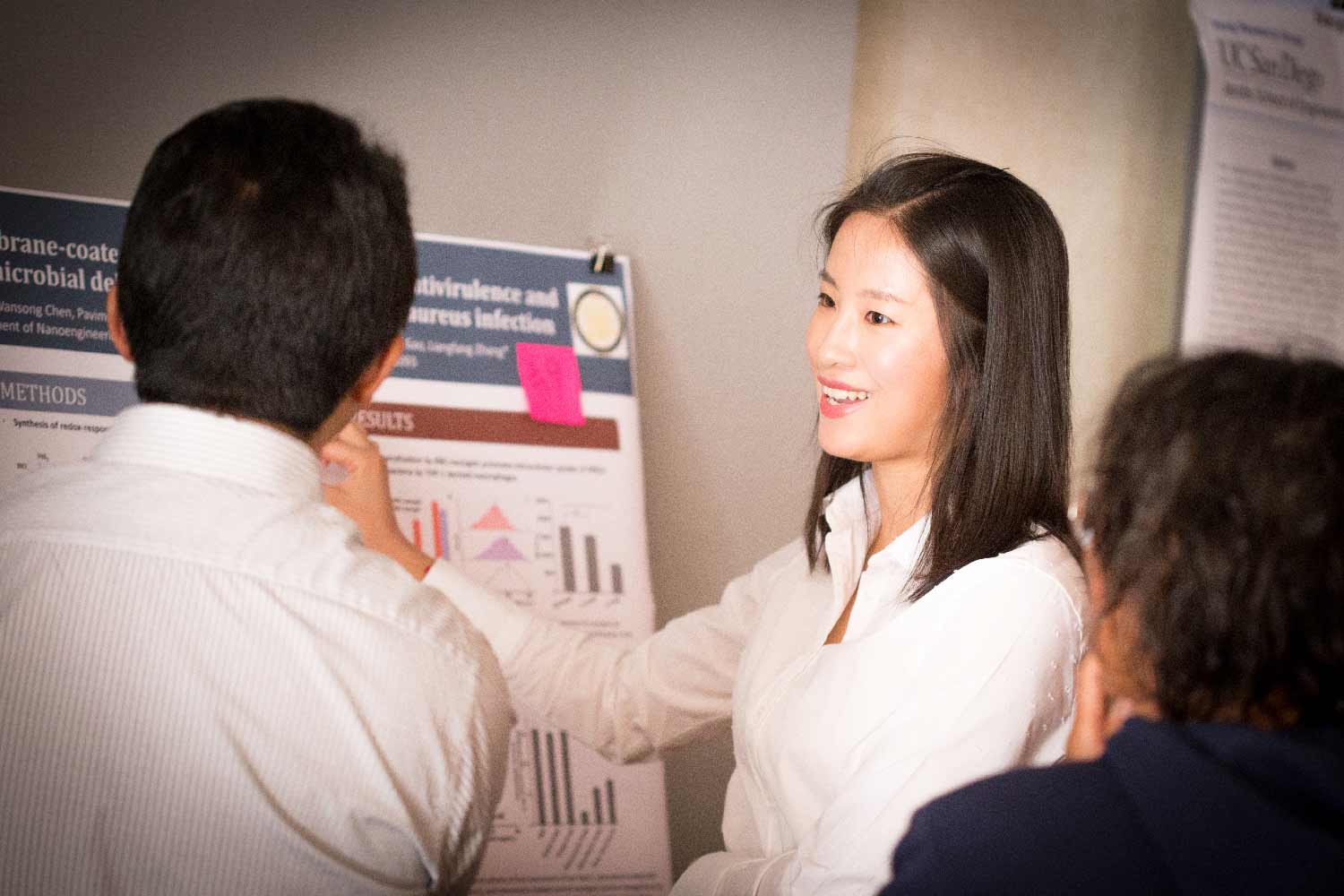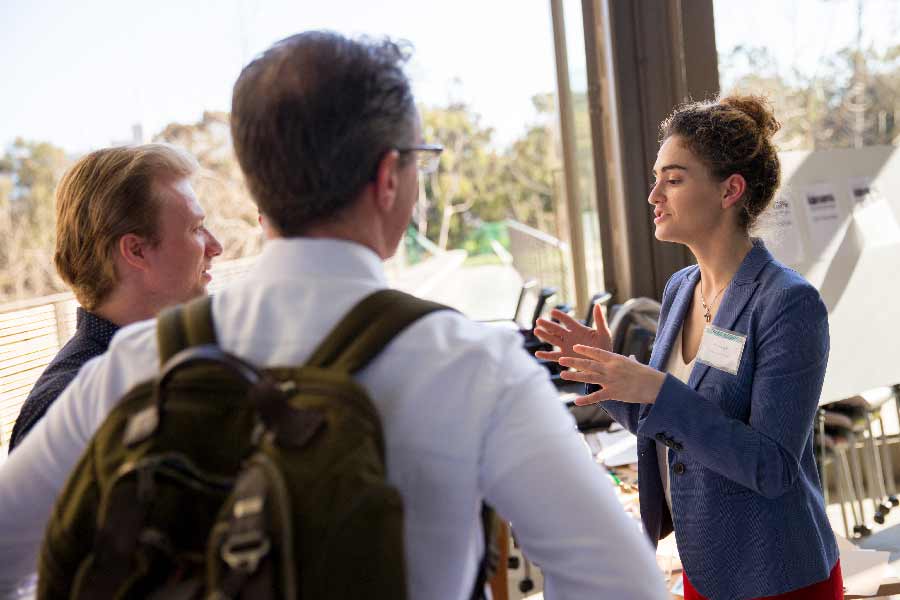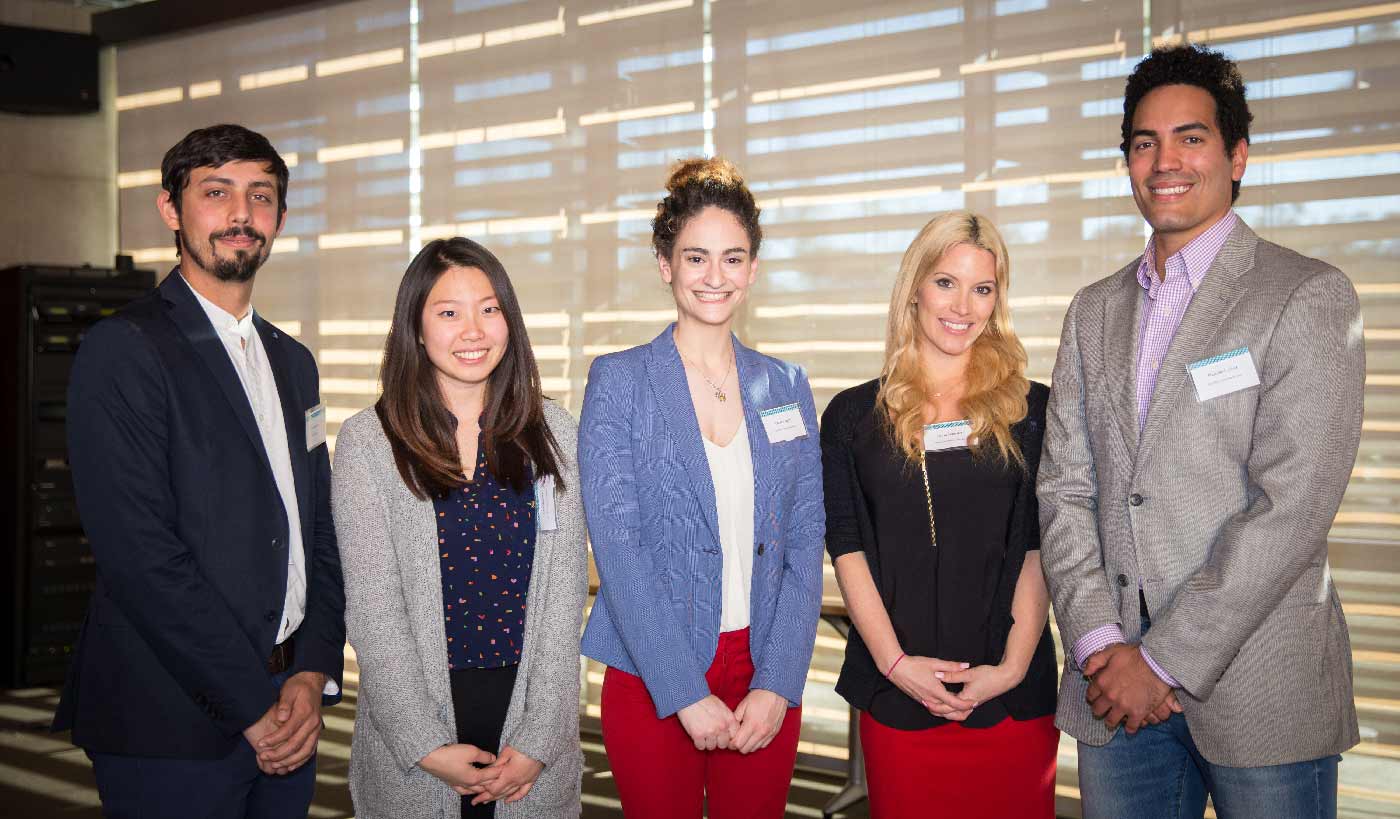
By:
- Liezel Labios
Published Date
By:
- Liezel Labios
Share This:

Graduate Students Launch NanoXpo to Show Off Real World Impact of Nanoengineering
Biofuel cells that are powered by human sweat. 3D printed heart tissue. Tiny robots that could deliver drugs. Stretchable and wearable electronics. These are just a few ways that nanoengineers at UC San Diego are making a big splash—at the nanoscale level.
On Friday, graduate students, faculty and representatives from local industry, including Illumina, General Atomics, Becton Dickinson and NewCap Partners, came together on campus for the first NanoXpo, an event that showcased research from the Department of NanoEngineering.
“A lot of people don’t really know what nanoengineering is or how it applies to the real world. We wanted to hold an event that would answer these questions and show off all the cool technologies coming out of our department,” said Jeanne Lemaster, a UC San Diego nanoengineering Ph.D. student co-led NanoXpo.

“When some people hear the word ‘nanoengineering,’ they think of scary science like ‘grey goo’ or tiny little robots taking over the world. But we want people to understand that nanoengineering is a very diverse field with a lot of useful applications, like targeted drug delivery and more efficient batteries. It’s engineering on a very small scale for a very big impact,” said nanoengineering Ph.D. student and NanoXpo co-leader Chava Angell.
Nanoengineering is science and technology at dimensions that are hundreds of times smaller than the width of a human hair. Nanoengineers study the world and manipulate matter at very tiny scales — all the way down to the cellular, molecular and atomic levels. This zoomed in approach can lead to the development of more powerful microscopes that can image hard-to-reach tumors, or new materials that can harvest energy from unconventional sources such as human sweat, for example.
“It’s a relatively young field,” Angell said. The UC San Diego Department of NanoEngineering, one of the first nanoengineering programs in the United States, was established in 2007. The department has helped spawn research centers such as the Center for Wearable Sensors (CWS) and the Sustainable Power and Energy Center (SPEC), both at UC San Diego.
Angell and Lemaster created NanoXpo to share their department’s history and growth, and especially to give graduate students an opportunity to share nanoengineering research with their peers and to communicate real-life applications of their work to industry partners. The one-day event featured 20 poster presentations, a poster competition judged by industry representatives, and a networking reception.

The winners of the poster competition received Amazon gift cards in the amounts of $75, $50 and $25. The first place prize went to Fernando Soto, a Ph.D. nanoengineering student in Joseph Wang’s lab, for his poster on ultrasound-powered nanorobots for targeted drug delivery. Yue Zhang, a nanoengineering Ph.D. student from Liangfang Zhang’s group, won second place. Her poster featured a technology to disguise nanoparticles as the body’s own cells (red blood cells, platelets, beta cells in the pancreas) for therapeutic applications. Juliane Moreta, a nanoengineering Ph.D. student also from the Wang lab, received third place for presenting her work on a printed tattoo that can harvest energy from the user’s sweat.
“This event is wonderful because it gave me a chance to see all these interesting topics,” said Dajun Yuan, a representative from Illumina. “It’s a good opportunity to connect industry with research so we can provide ideas to make [the research] more applicable and useful in the near future. At the same time, we can borrow some ideas from these research projects and improve our technology and collaborate.”
“By interacting with industry partners, I’ve learned how my research could potentially fit into the corporate environment,” said Kevin Kaufmann, who presented his work on 3D-printed metal materials. He explained that his research could be used to make more robust parts for the aerospace industry.
Angell and Lemaster hope to make NanoXpo an annual event. In the future, they envision NanoXpo becoming a larger exposition in which nanoengineers from other universities could also share their work.
“This could be a great opportunity for San Diego to become the hub of nanotechnology, as much as it is a hub of bioengineering and biotechnology,” Lemaster said.
Share This:
You May Also Like
Stay in the Know
Keep up with all the latest from UC San Diego. Subscribe to the newsletter today.


